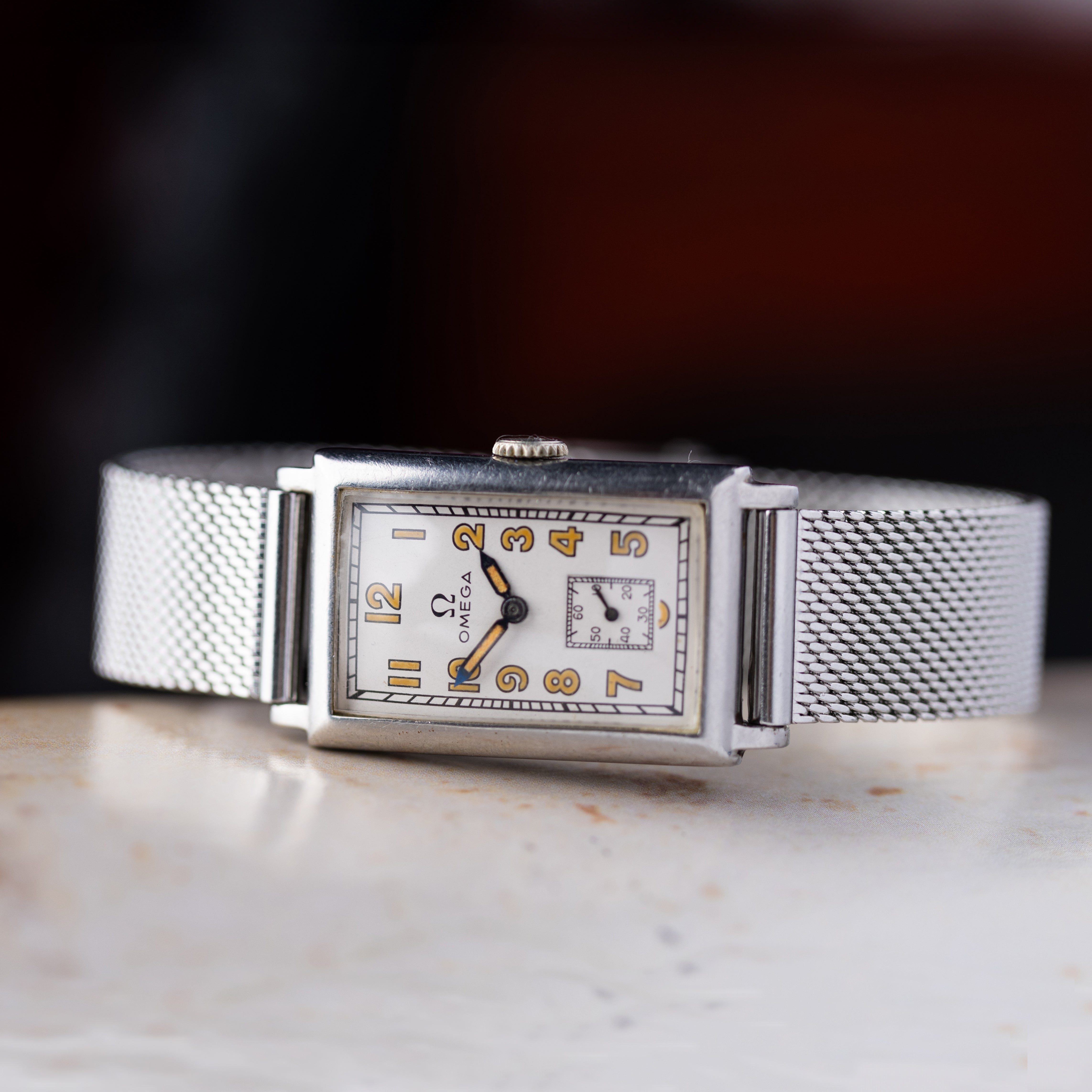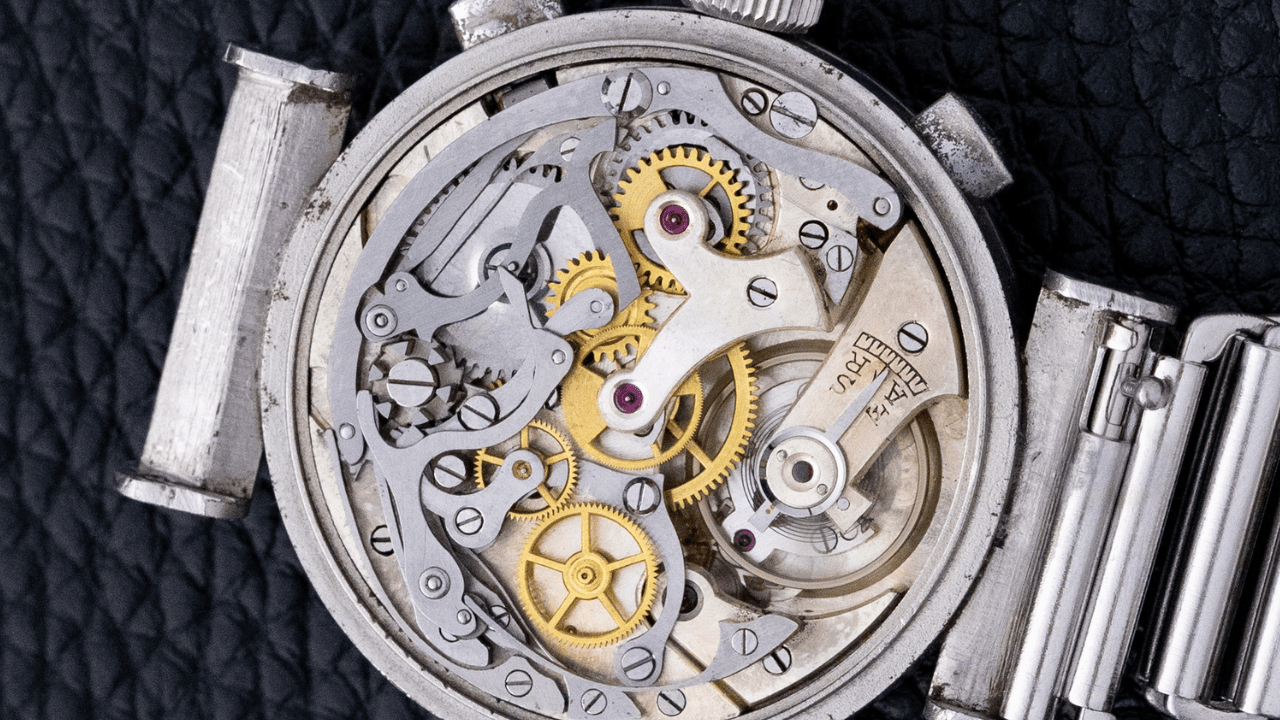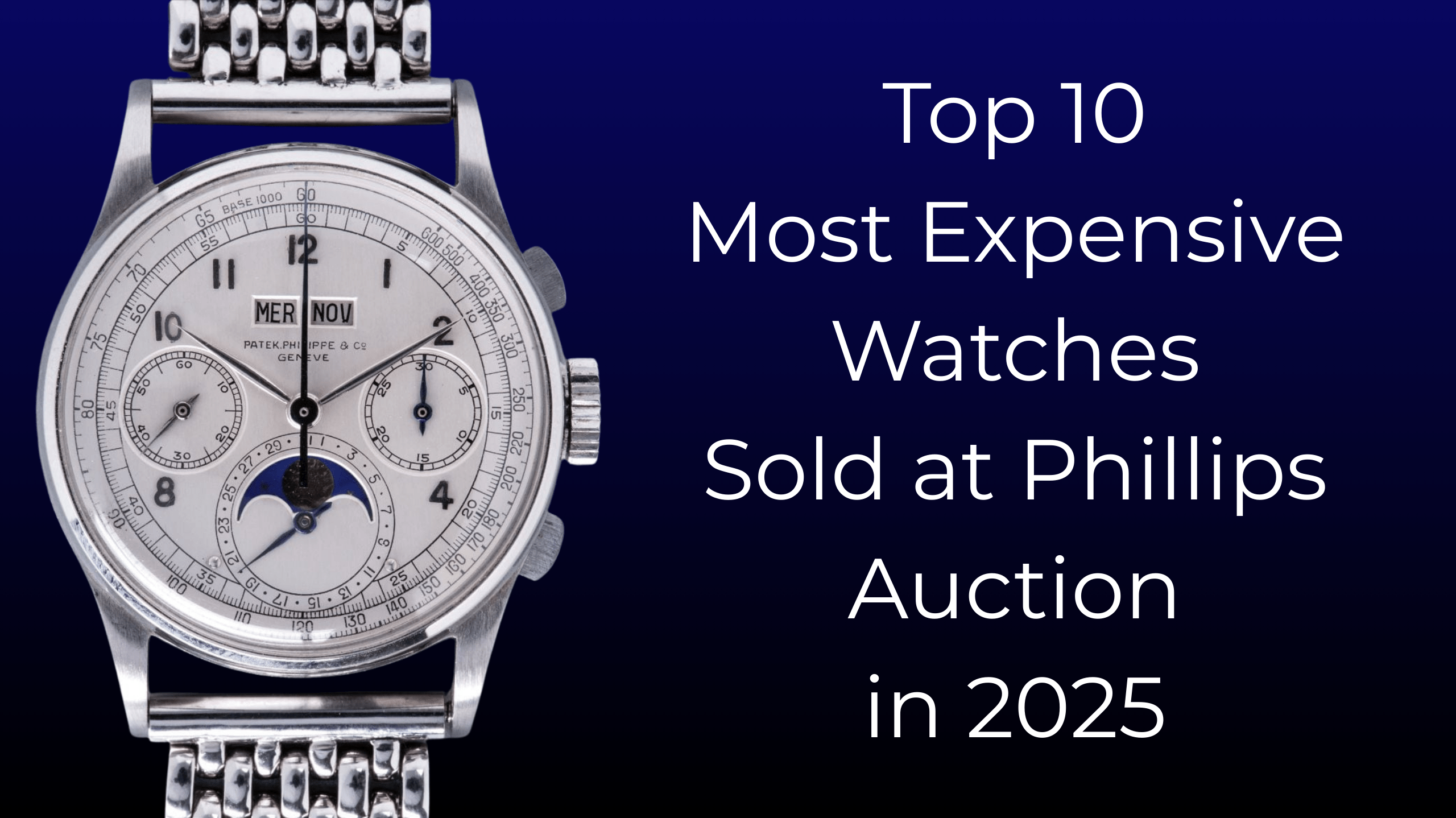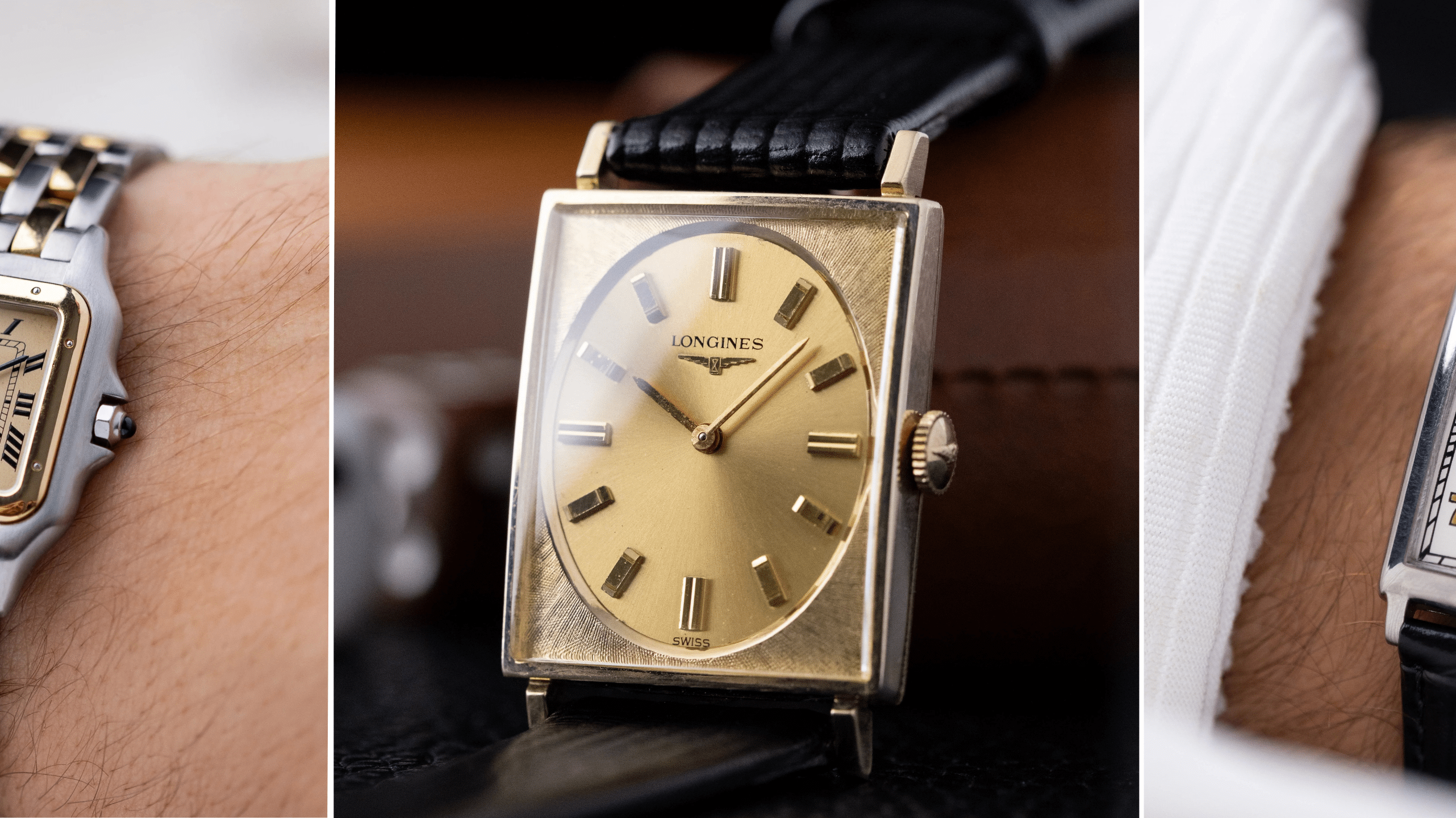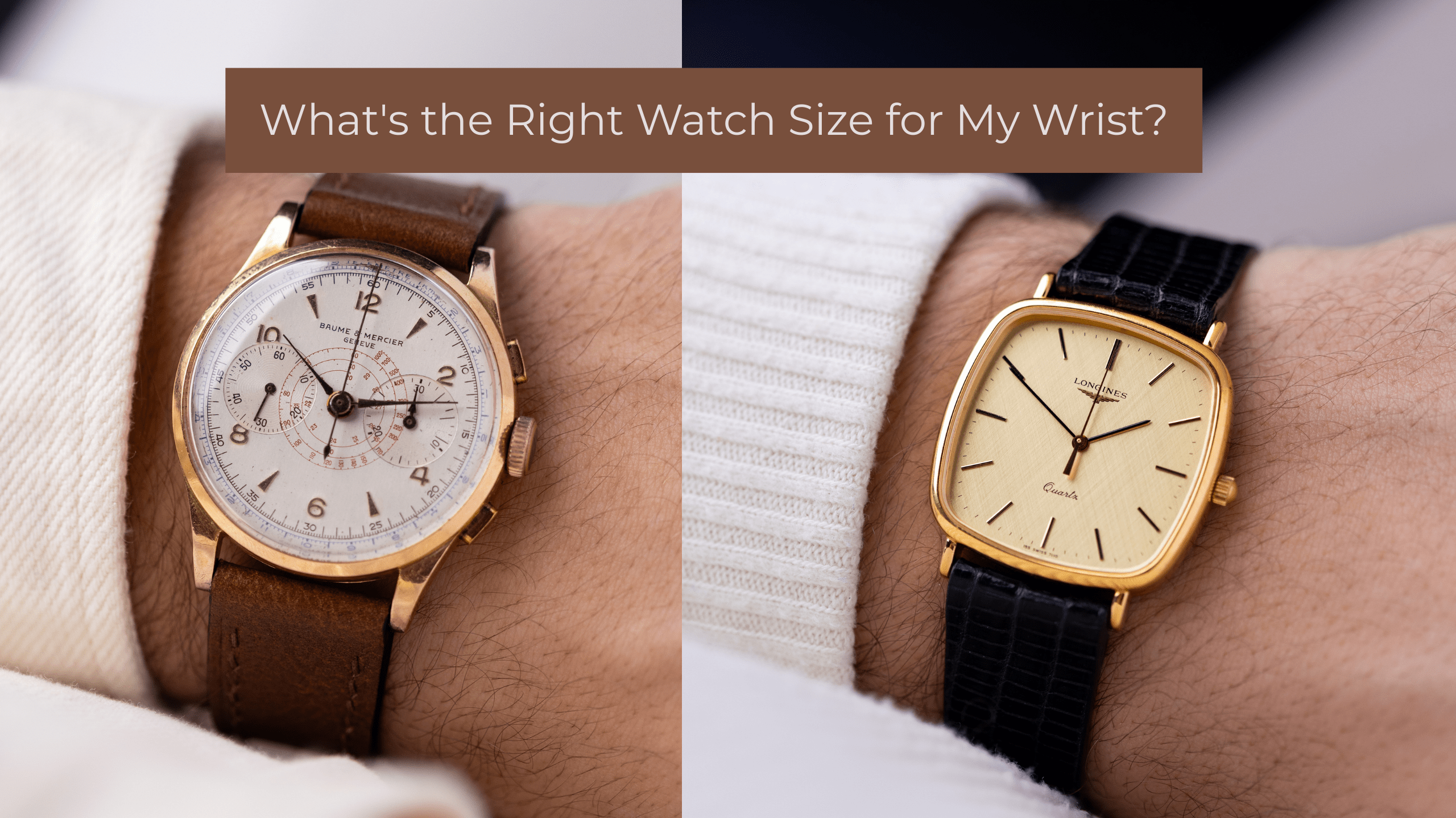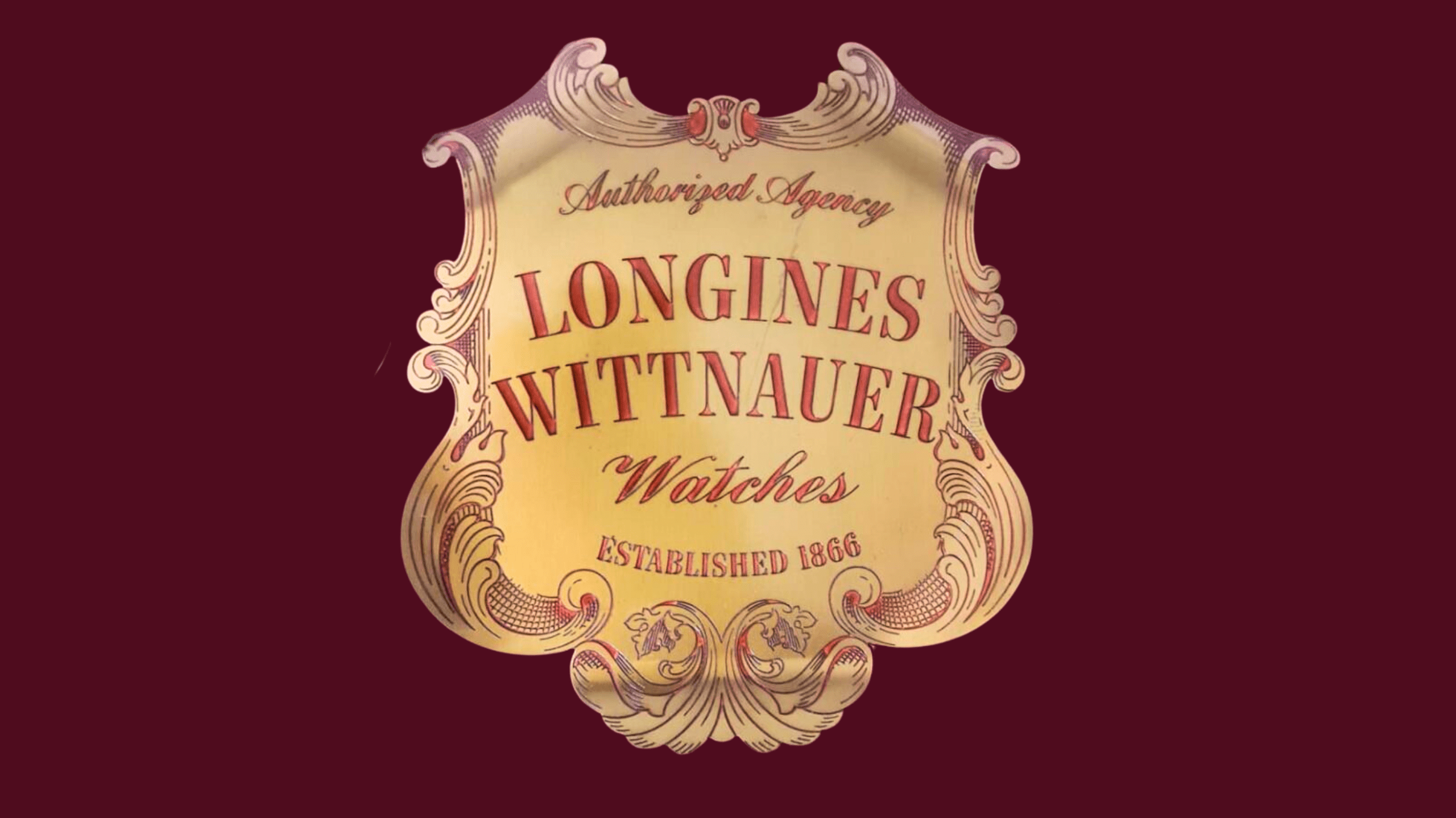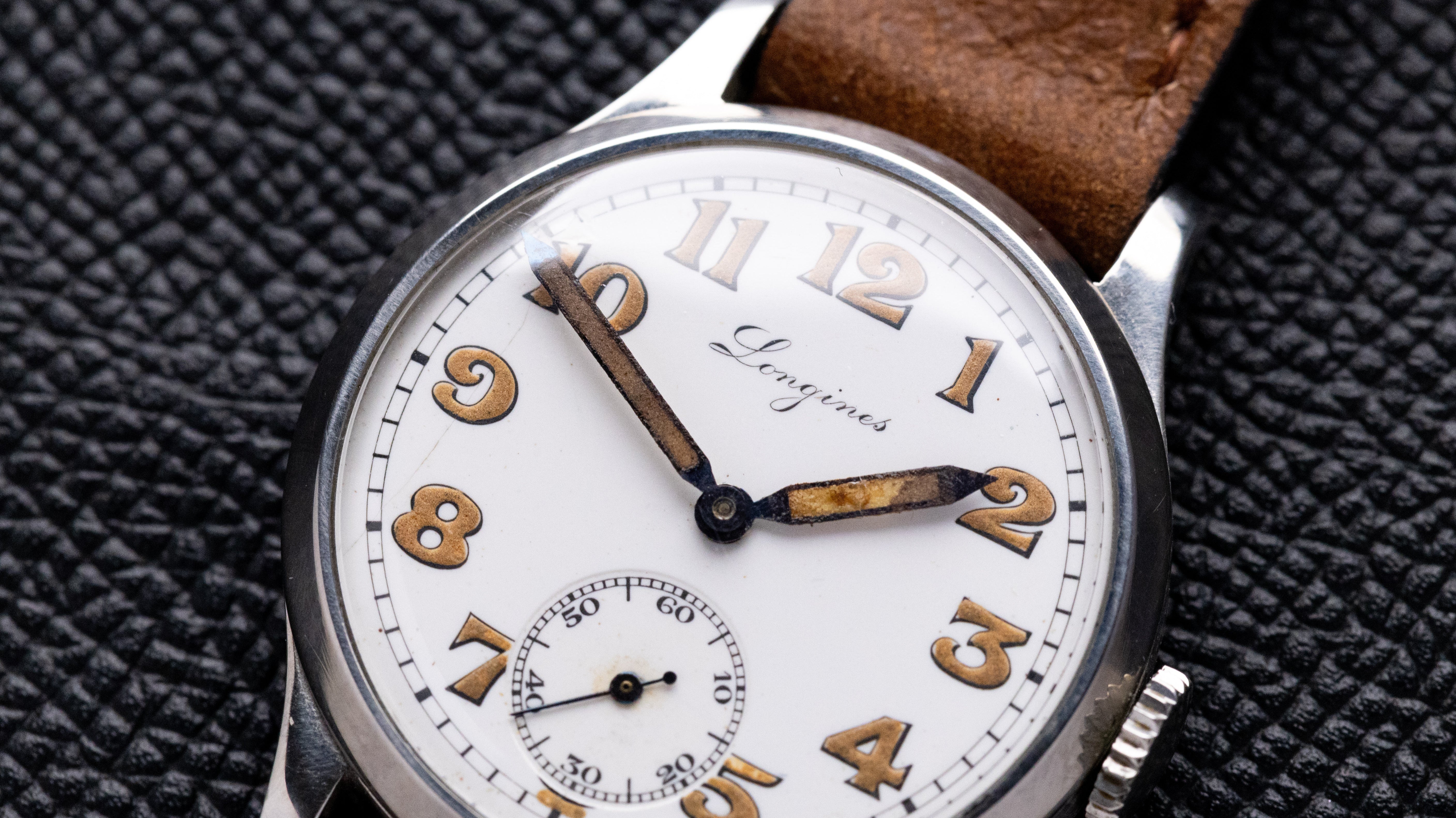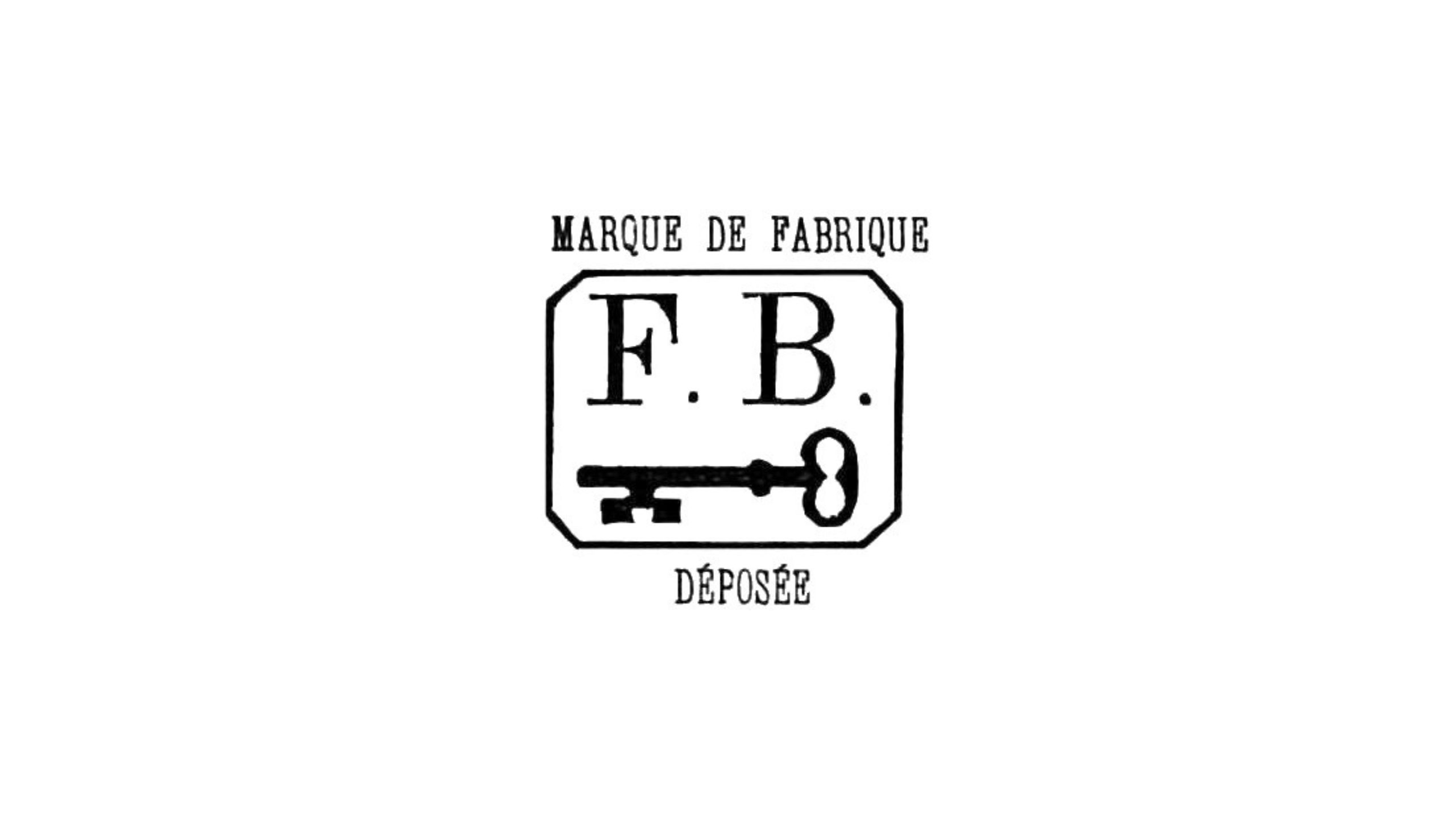Few vintage chronograph movements can claim the pedigree, longevity, and mechanical beauty of the Minerva Calibre 13-20. Produced for nearly 80 years on the same machinery, this remarkable column-wheel chronograph calibre remains a hidden gem for serious collectors—combining hand-finished elegance with historical weight.
Origins and Development (1923–1940s)
The Cal. 13-20 was born in 1923, at a time when wrist chronographs were still in their infancy. Developed in collaboration with Dubois-Depraz, one of the greatest names in chronograph modules, the 13-20 started life as a mono-pusher design, meaning a single button controlled start, stop, and reset functions.
By the 1940s, it evolved into a dual pusher layout (as seen in the pictured Minerva), allowing separate control of the chronograph hands—setting the standard for how chronographs function to this day. Available in 30- and 45-minute counter variants, it was installed in various professional-grade watches, including pieces for doctors, military officers, and scientists.
Technical Features
What sets the 13-20 apart isn't just its age—it's the quality of its engineering:
-
Column-Wheel Chronograph
This mechanism ensures smooth engagement of chronograph functions with precise tactile feedback. Today, it's a hallmark of high-end chronograph construction. -
Manual-Wind Movement
With 17 jewels and a thickness of only 6.4 mm, it’s compact, yet robust. -
Screwed Balance & Breguet Hairspring
Classic watchmaking hallmarks—enhancing accuracy and regulating stability. -
Solid Steel Components
Return springs, levers, and cams are made of solid steel, hand-finished with beveled edges—something rarely seen in industrial movements. -
Combined Set Lever Spring and Minute Wheel Bridge
An unusual yet efficient design that simplifies movement construction without compromising reliability. -
No Shock Protection
True to its era, the 13-20 lacks Incabloc or modern shock systems, reminding collectors of the delicacy and care required for vintage mechanical timekeeping.

A Movement That Speaks to the Eye
Open the caseback of a Minerva chronograph with Cal. 13-20 and you're greeted with a classical layout: golden gear trains, mirror-polished steel chronograph levers, hand-blued screws, and the unmistakable Minerva arrow-in-circle hallmark stamped on the bridge. Each component reveals the hand of a finisher—this was craftsmanship from an age before CNC machines.
You’ll also find the REV or RFV "Modèle Déposé" marking, identifying it as a registered Swiss design. These details matter deeply in the collector market.

Legacy and Later Use
While many chronograph movements come and go, the Cal. 13-20 remained in production virtually unchanged until the early 2000s. It was used in select Panerai Mare Nostrum and Ferrari chronographs, and its architecture laid the foundation for movements in the Montblanc Minerva Heritage collection after the brand was acquired by Richemont.
Its longevity speaks to its exceptional construction—a movement truly ahead of its time, and yet now deeply rooted in the past.
Why Collectors Seek Cal. 13-20
-
Pure Chronograph DNA – This isn’t a base movement with a bolt-on module. It’s a purpose-built chronograph from the ground up.
-
Hand-Finished Quality – Each example reflects traditional Swiss finishing at its peak.
-
Historic Significance – One of the earliest wristwatch chronograph calibres.
-
Rarity – Minerva remained a small-scale manufacture, making pieces housing this calibre far less common than contemporaries like Valjoux or Landeron.
-
Direct Lineage – The exact same machinery and tooling used for decades give each example a sense of continuity and soul.
Final Thoughts
The Minerva Cal. 13-20 represents the golden intersection of function, beauty, and history. For collectors, it’s more than just a mechanical marvel—it’s a window into the evolution of chronograph design, untouched by mass production and made with a watchmaker’s eye.
Owning a watch with this calibre is like holding a piece of horological heritage—one that ticks with the quiet confidence of a movement that has endured for a century.

